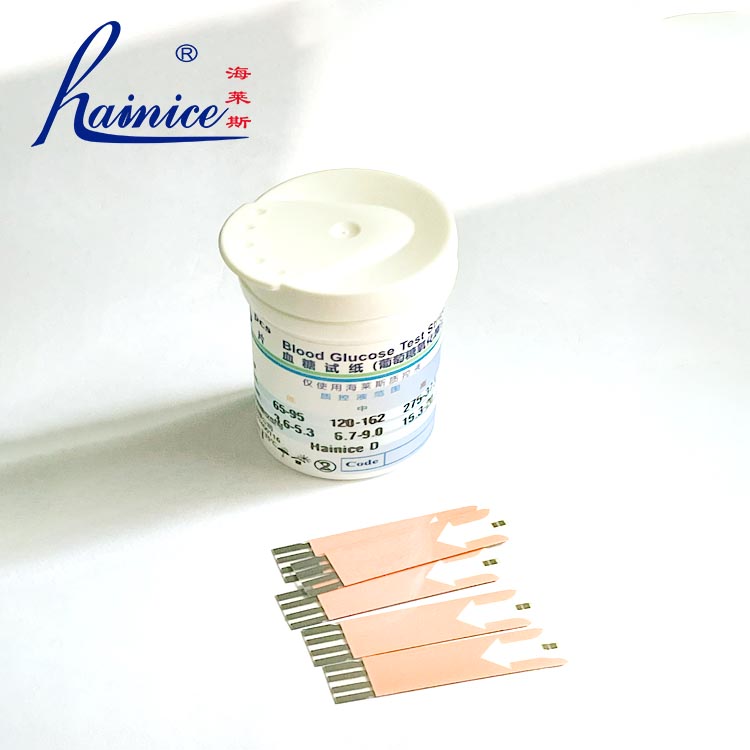At present, the main products of Hainice Biotechnology (Dandong) Inc. are blood glucose meters and test strips. The company serves the public with the production concept of
The Basic Principle of Blood Glucose Test Strips
Edit date:2025-02-26
Blood glucose test strips are a common medical supply in our daily lives, especially for people with diabetes, as they are an essential tool for monitoring blood sugar levels. So, how do blood glucose test strips work? Their basic principle actually involves a clever combination of biochemistry and electrochemistry.
First, the core part of a blood glucose test strip is a small reaction zone that contains a special enzyme, usually glucose oxidase or glucose dehydrogenase. These enzymes play a critical role, as they can undergo specific chemical reactions with glucose in the blood. Taking glucose oxidase as an example, when blood is dropped onto the strip, the enzyme catalyzes the reaction between glucose and oxygen, producing gluconic acid and hydrogen peroxide. In this process, glucose is oxidized, and hydrogen peroxide becomes the key substance for the subsequent reaction.
Next, hydrogen peroxide undergoes further chemical reactions on the surface of the electrode on the test strip. The electrode is another important component of the strip, capable of detecting the tiny current generated during the chemical reaction. When hydrogen peroxide is oxidized on the electrode surface, it releases electrons, creating an electric current. The strength of this current is directly related to the concentration of glucose in the blood—the higher the glucose concentration, the more hydrogen peroxide is generated, and the stronger the current.
Another important part of the blood glucose test strip is its connection to the glucose meter. The electrode on the strip transmits the current signal to the glucose meter through a connection zone. Inside the glucose meter, there is a precise circuit system that converts the detected current strength into a specific blood glucose concentration value, which is then displayed on the screen. This process usually takes only a few seconds, making it very fast and convenient.
Of course, to ensure the accuracy of the measurement results, there are some precautions to consider when using and storing blood glucose test strips. For example, the strips typically have an expiration date, and expired strips may yield inaccurate results due to decreased enzyme activity. Additionally, the strips are sensitive to environmental temperature and humidity, so they should be stored away from high temperatures or moisture. When using the strips, it is also important to ensure that the amount of blood dropped onto the strip is appropriate, as too much or too little blood can affect the measurement results.
In summary, although the working principle of blood glucose test strips involves complex chemical reactions, their design makes them easy for ordinary people to use. Through the reaction between enzymes and glucose, as well as the detection of current by electrodes, blood glucose test strips can quickly and accurately provide us with blood sugar level readings. For people with diabetes, this is not only a convenient monitoring tool but also an important companion in managing their health.

